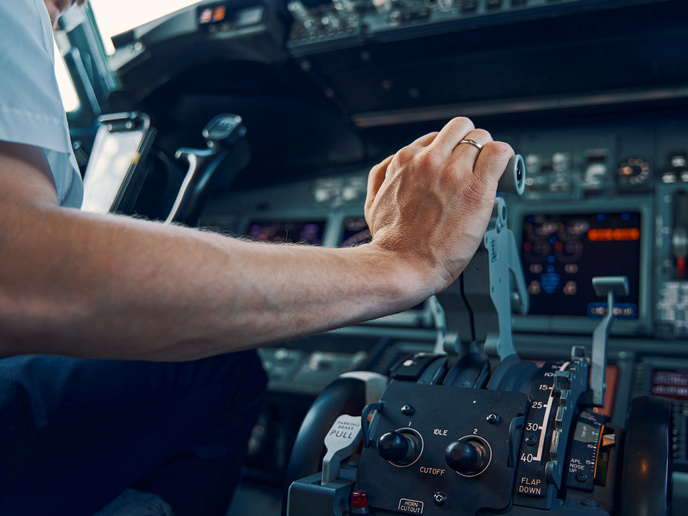New electronically steered antennas set to boost in-flight connectivity
In-flight connectivity (IFC) is more than just entertainment. While its ability to provide Wi-Fi and streaming services to the aircraft cabin has made flying more enjoyable, IFC’s true potential lies in data. “IFC has the potential to provide real-time operational data to pilots, operators and air traffic controllers, data that can be used to improve aircraft maintenance, safety and flight efficiency,” says Manuel González, an engineer at TTI(opens in new window), a Spanish company developing radiofrequency and antenna solutions for satellite communications. With the support of the EU-funded LESAF(opens in new window) project, TTI, along with Celestia UK(opens in new window), a start-up specialising in high-technology products, is developing the electronically steered antennas (ESAs) aircraft need to leverage IFC’s full potential. “Unlike current mechanical and electronically steerable antennas, LESAF’s ESAs can track multiple satellites simultaneously to, for example, enable soft handovers,” explains González. “This, along with their low profile/low drag and improved reliability, has positioned our ESA as a viable solution for the next generation of IFC services.”
Superior performance and benefits
To maximise connectivity, researchers knew they needed to design an ESA able to operate in both low Earth orbit (LEO)/medium Earth orbit (MEO) and GEO satcom scenarios. To achieve this, the project, which received support from the Clean Sky 2 Joint Undertaking(opens in new window), was divided into two phases. During the first phase, the team conducted an in-depth system analysis, defining the necessary requirements and assessing the available technology. With this information in hand, they then designed, developed and validated a receiver and transmitter for use in an ESA. The final demonstrators, which cover both the K- and Ka-band frequencies, are scaled down prototypes of a complete ESA-based satcom terminal. “Not only does this technology meet the stringent safety requirements of the aviation sector, it also offers superior performance and benefits over other available solutions,” adds González.
Making aviation more sustainable
ESAs such as that developed by the LESAF project have the potential to answer some of aviation’s main challenges – including the need to reduce its carbon footprint. “By enabling efficient access to real-time data, pilots and operators can implement more efficient flight paths, reduce power and fuel consumption, and increase overall aircraft efficiency – all of which help aviation become more sustainable,” remarks González.
Further improving aviation’s safety record
This same data could also help the sector further improve its already stellar safety record. According to González, having access to data is the key to enabling predictive maintenance and designing more complex components. “ESAs offer a degree of reconfigurability and scalability that address a variety of applications, markets and needs – from increasing cabin connectivity to enabling lower carbon emissions and improving safety critical components,” concludes González. “For these reasons, we believe ESAs will dominate the IFC market in the decades to come.” To help facilitate this market uptake, TTI is currently working to advance the technologies developed in the project to in-flight applications. They are also exploring adapting the LESAF solution to other, non-ESA uses, such as fixed applications for LEO/MEO mega-constellations and mobile railway/maritime applications.







